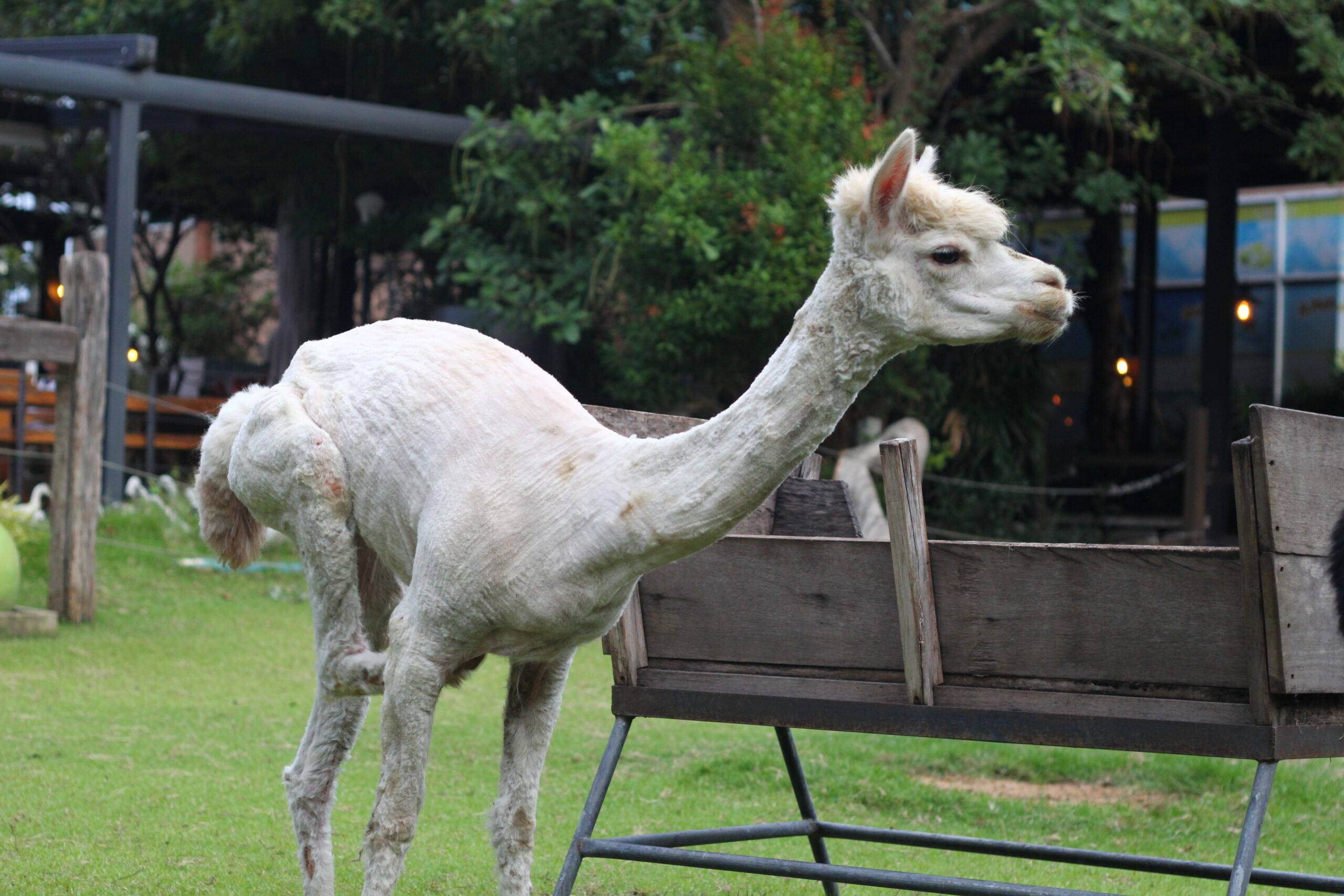Written by: Bria Osborne, OVC 2026
Edited by: Dr. Paisley Canning
Common Causes of skin issues and their signs
Mange
Mange is a type of external parasite (mite) that lives and feeds on your alpaca. Mange is one of the most common reasons for skin issues in alpacas.
Signs of mange include itching, papules (raised spots on skin), and pustules on skin. As the mange progresses it can lead to crusting, fiber loss, skin thickening, and secondary bacterial and fungal infections (figure 1). If left untreated, alpacas can become lethargic and emaciated.
Most often found between the toes, thighs, under the tail, on chest, stomach, udder, udder, prepuce, ears (figure 2), lips, around eyes (figure 3), and “armpit” area (figure 4).
Transmission of mange is through animal-to-animal contact, contact through contaminated environment, and contaminated equipment.
Mange is a multifactorial disease meaning that immune status, stress, and predisposing factors (environment, high stocking density, pregnancy) all come into play as to whether your alpaca may get a mite infection. It is important to quarantine any new alpacas coming into your herd as new animals are often mite reservoirs.
Contact your veterinarian to discuss mange and external parasite prevention.
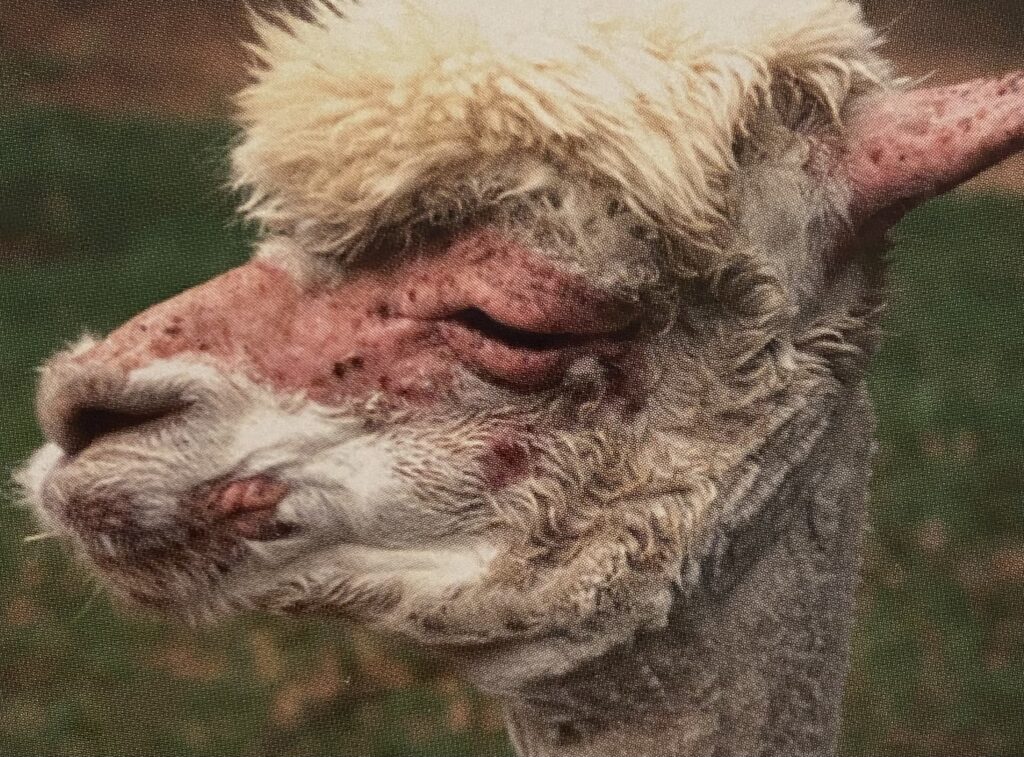
Photo credit: Alpaca veterinary field manual
Figure 1: This Alpaca has a case of mange with a secondary bacterial infection
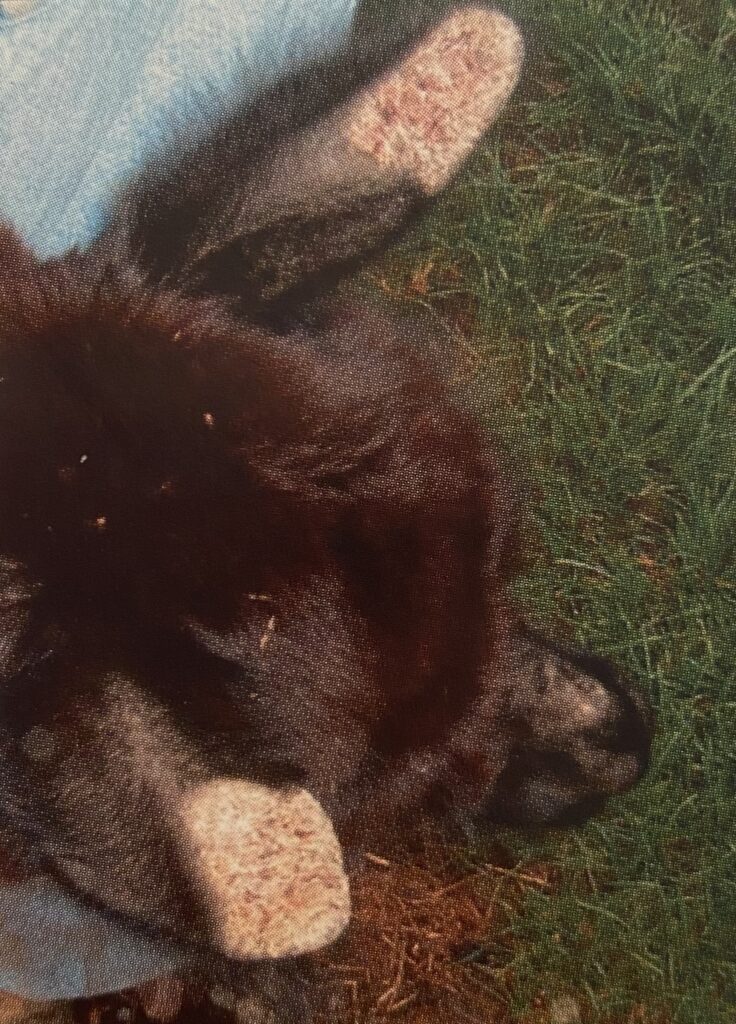
Photo credit: Alpaca veterinary field manual
Figure 2: Above is a cria with mange on its ears.
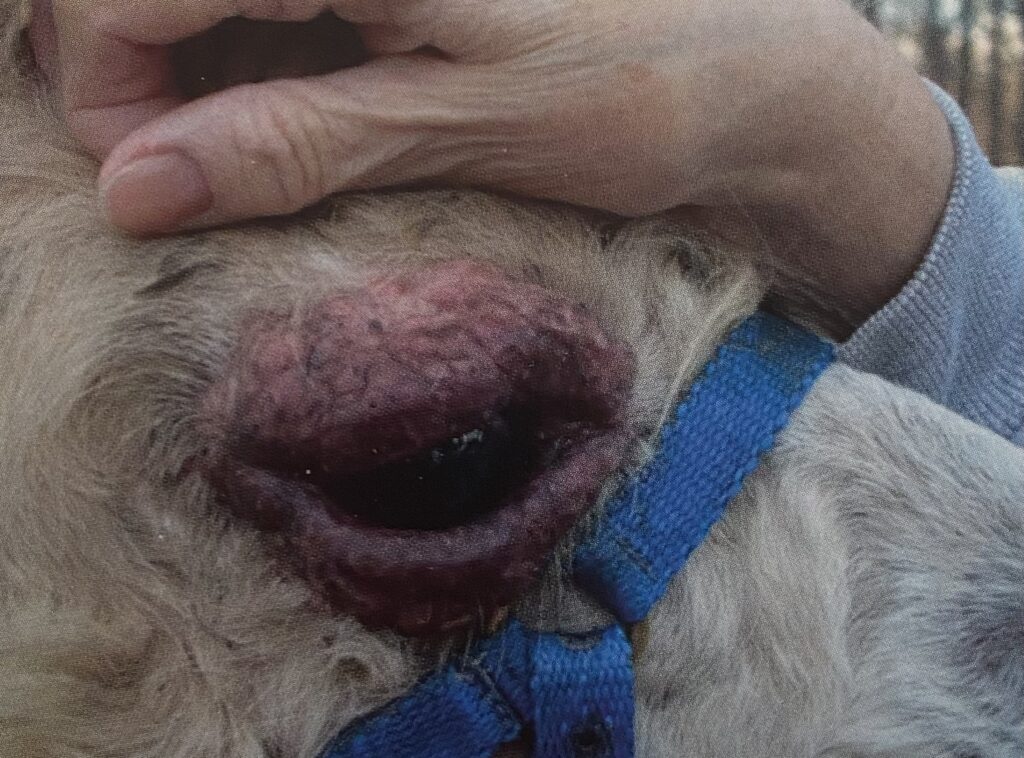
Photo credit: Alpaca veterinary field manual
Figure 3: Above demonstrates what mange around the eyes may look like.
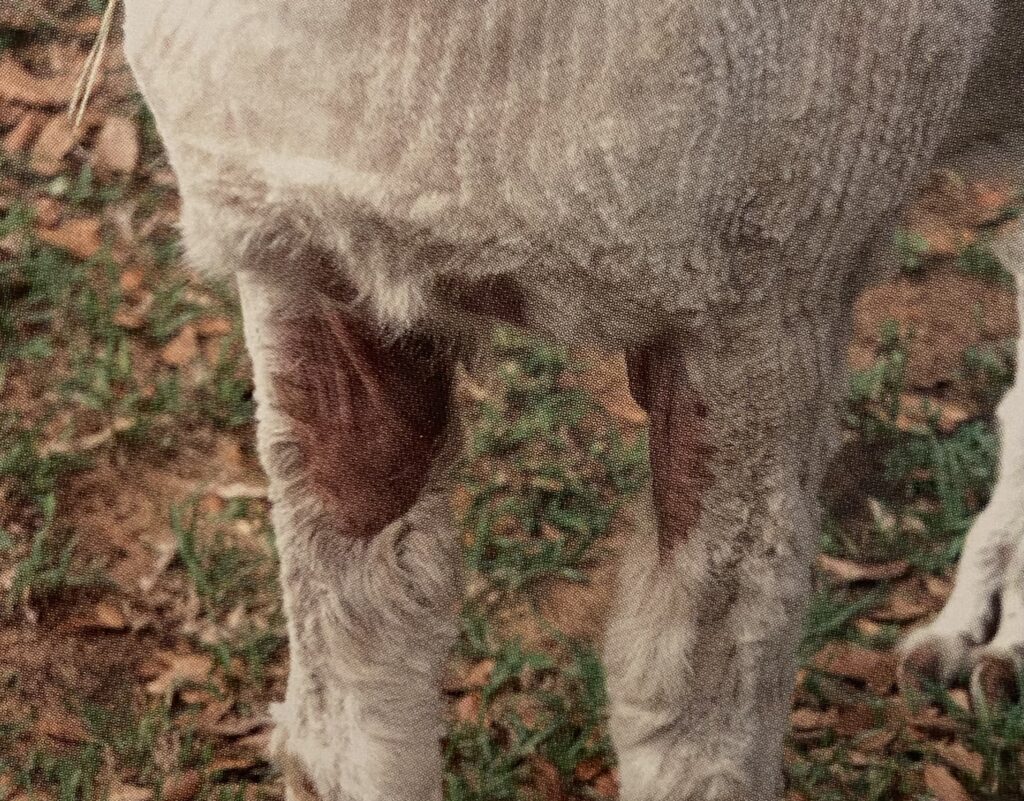
Photo credit: Alpaca veterinary field manual
Figure 4: Above demonstrates what mange in the “armpit region” looks like.
Insect Bites
Insect bites are common in alpacas and can result in fiber loss especially on the bridge of the alpacas’ nose (figure 5).
When the alpaca itches and rubs its nose, it may create sores that can get infected. It is important to make note of whether your alpaca is experiencing just hair loss or if it is accompanied with sores or pustules. Your veterinarian may prescribe medications if there is an infection.
The best treatment for fly bites is prevention. The following are some ideas for how to prevent flys:
- Remove manure regularly
- Keep pellets and feed (especially feed with molasses in it) I sealed containers
- Consult your vet about safe fly sprays for your alpacas
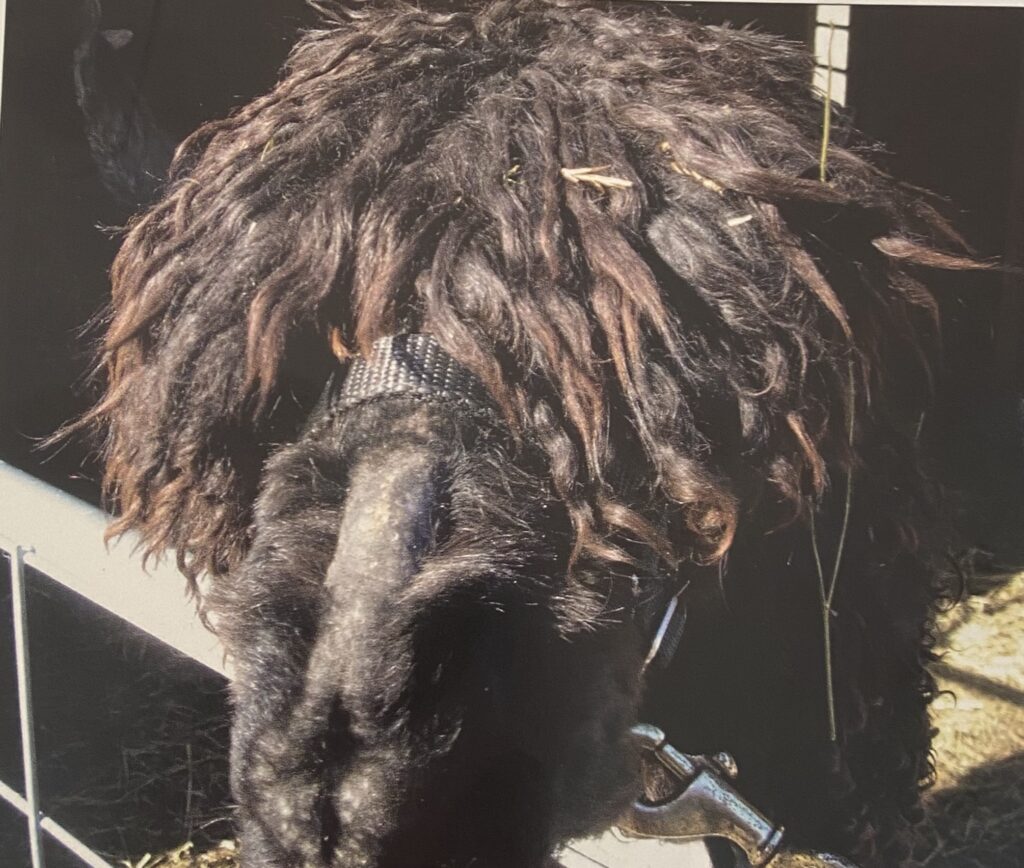
Photo credit: Alpaca veterinary field manual
Figure 5: Above is an alpaca that is experiencing fiber loss on its nose due to insect bites.
Bacterial and Fungal Infections
Bacterial and Fungal infections are commonly secondary skin infections, meaning they result after a previous injury or issue. These infections may present as inflamed and crusted skin and may be accompanied with fiber loss (figure 6). Treating and cleaning injuries as they arise is good management practice and reduces the likelihood of secondary bacterial and fungal infections. Talk to your veterinarian and visit our blog “First aid kits- A farm necessity” to learn about wound care and cleaning supplies.
Ring worm is a common fungal infection that causes fiber loss, scaling, and crusting. It is most seen on the head, distal extremities, and the lips. Special care should be taken if you suspect your alpaca has ringworm as it is contagious to humans.
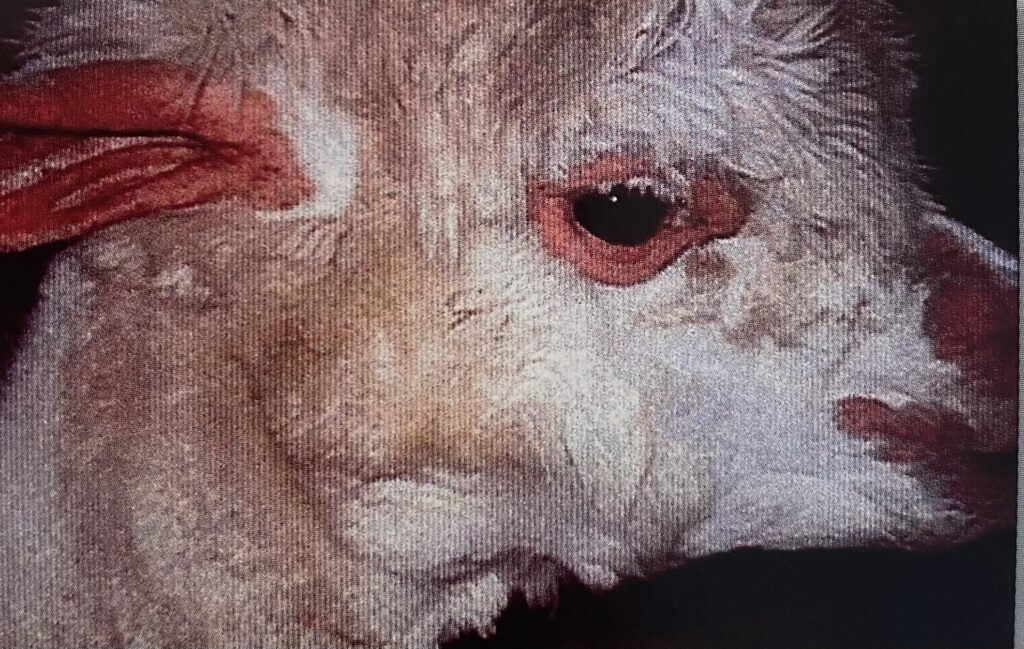
Photo credit: Alpaca veterinary field manual
Figure 6: Above is an alpaca suffering from a bacterial infection on its face.
Allergies
Just like humans, alpacas can have food and contact allergies that can result in skin irritation. If your alpaca is allergic to a certain type of food, they may have an irritated and crusty mouth (figure 7) .
Moldy or dusty hay can also result in irritation around the eyes. Eyes may run and have red and inflamed skin around them.
Paying attention to the quality and state of your feed and if there have been any feed changes can help give you and your veterinarian some background on what could be causing the skin irritation.
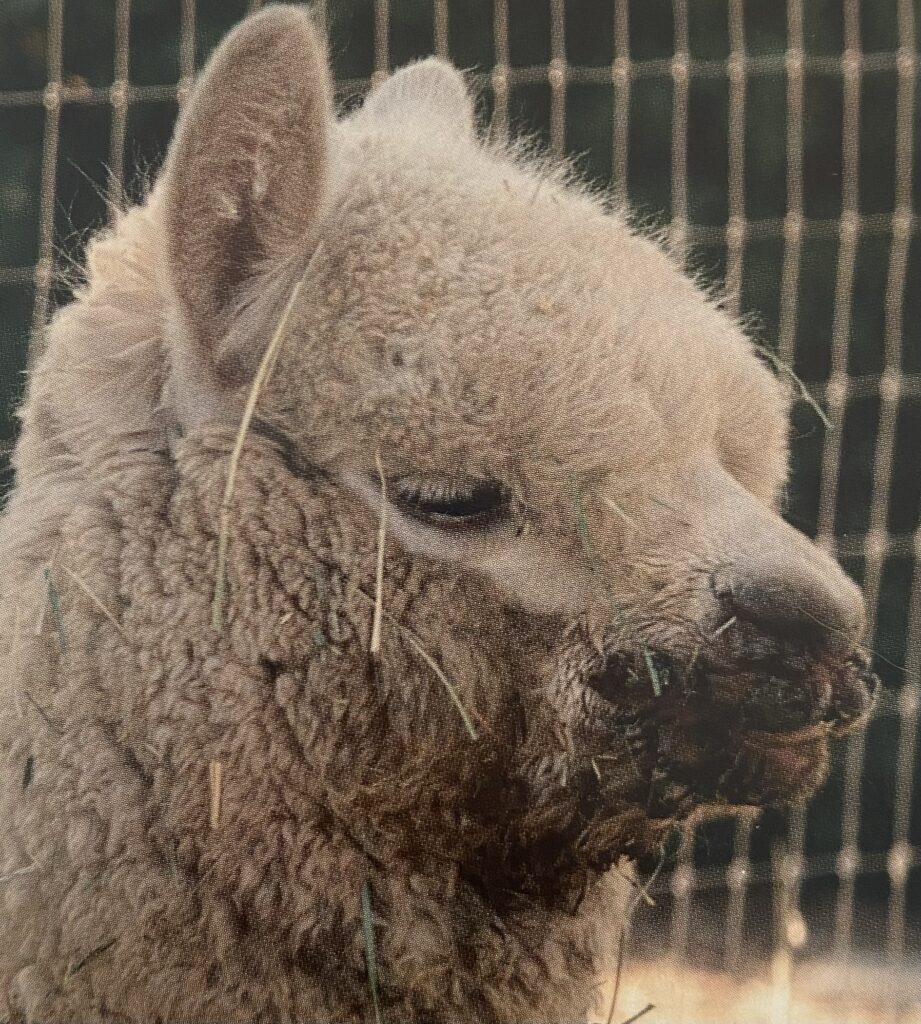
Photo credit: Alpaca veterinary field manual
Figure 7: Above is an alpaca exhibiting an irritated and crusty mouth due to a food allergy.
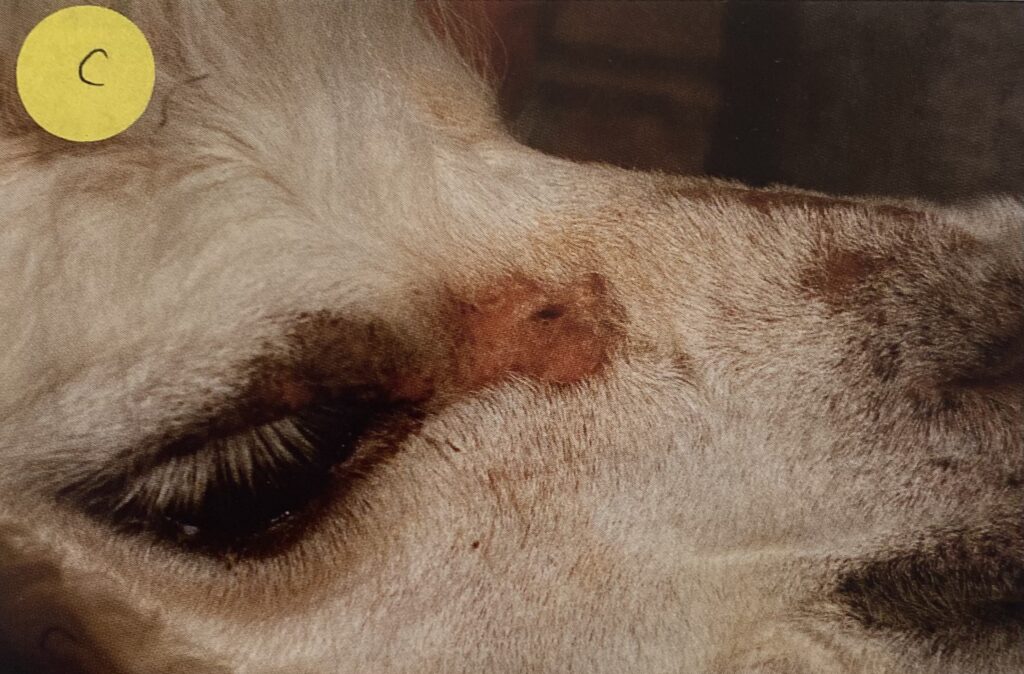
Photo credit: Alpaca veterinary field manual
Figure 8: Above is an alpaca with irritation around its eyes due to dust and mold from its hay.
Zinc responsive dermatitis
Zinc responsive dermatitis (figure 9) occurs when an alpaca has low levels of zinc in their body.
Zinc is an important mineral that plays a role in many bodily functions such as protein and fat metabolism, quality of skin and fiber, immune response, bone health, and fertility. The most common sign of a zinc deficiency in alpacas is skin issues (dermatitis).
The most common way that zinc dermatitis shows up on an alpaca is through hair loss on the bridge of the nose and dry, thick skin around the anus. Although, other locations of the body can be affected such as the mouth, around eyes, ears, bottom the belly, inner thighs, and “armpit” region.
Although most commercially available alpaca diets are formulated with enough zinc to keep your alpaca healthy, your alpaca can experience intestinal issues which may prohibit the uptake of zinc and therefore create a deficiency. The levels of other minerals in your water and hay can impact zinc absorption. This is why it is important to consult your veterinarian if you are suspicious that your alpaca may have a zinc deficiency.
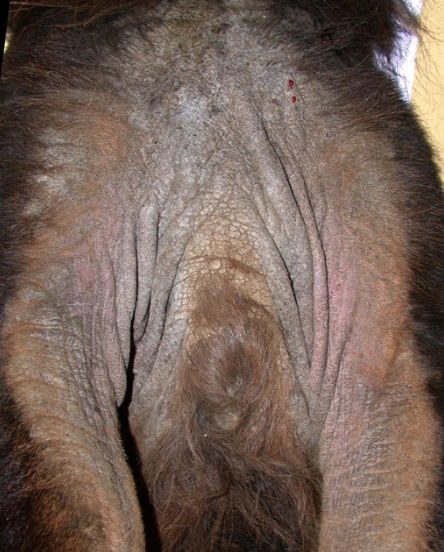
Photo credit: Nutrition and skin diseases in veterinary medicine by P.Hensel (https://www.semanticscholar.org/paper/Nutrition-and-skin-diseases-in-veterinary-medicine.-Hensel/9faabe8e449d47925f883fe74d839ad132418e37)
Figure 9: Above is an example of an alpaca experiencing zinc responsive dermatitis on its lower chest.
Please reach out to Dr.Canning if you notice any skin issues with your Alpacas. You can contact the clinic at [email protected], or on facebook.com/upperthamesvs.
References:
Alpaca Veterinary Field Manual by C. Norman Evans

